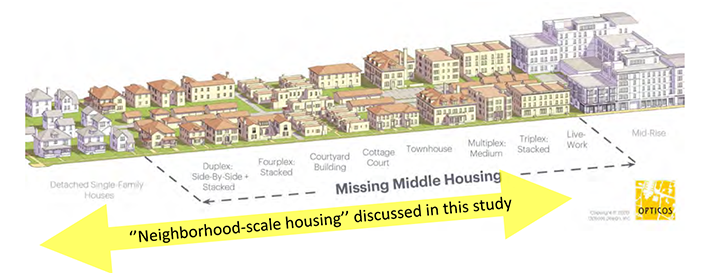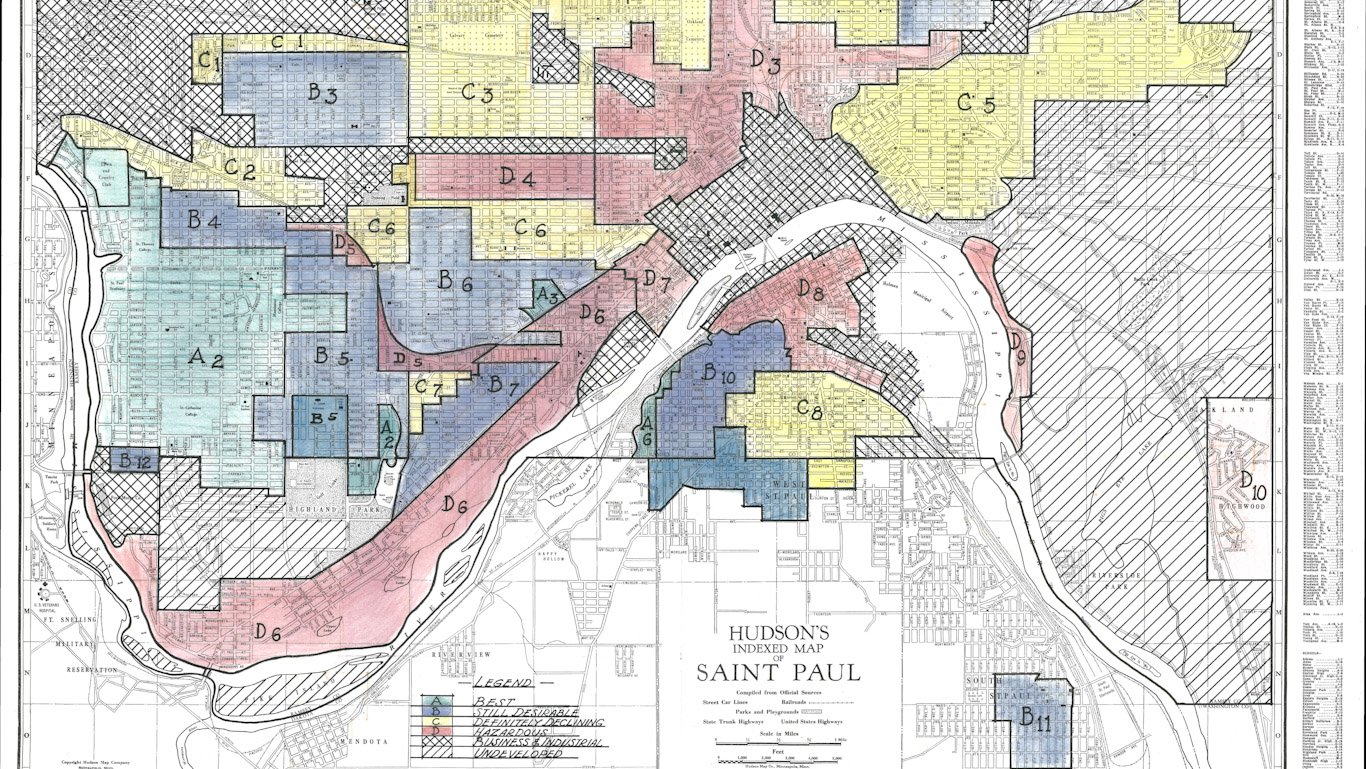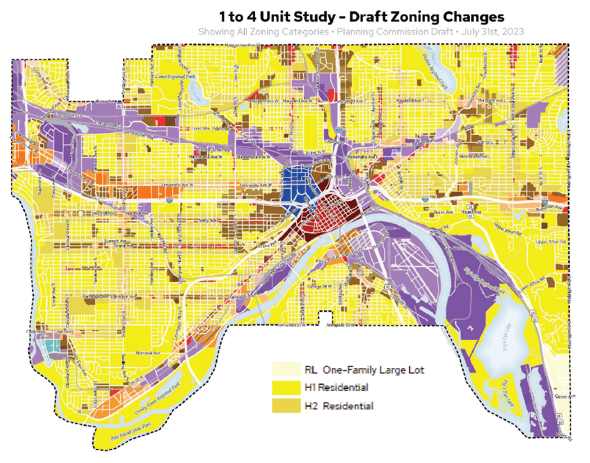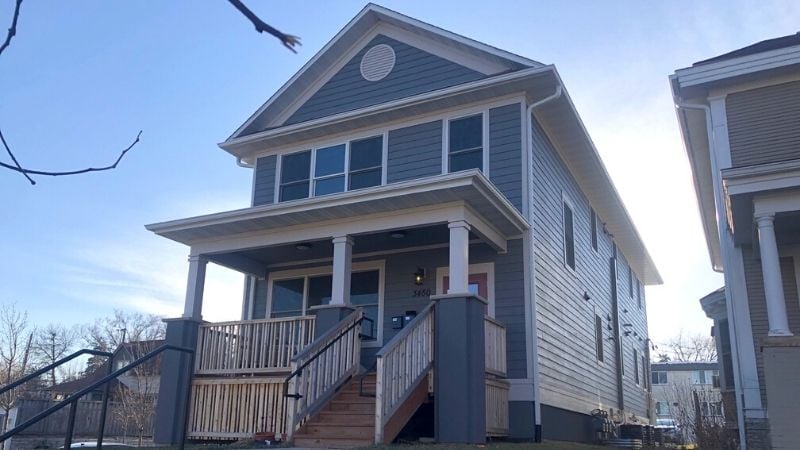The Cost of Home: Optimizing Land Use for Affordable Homes
Twin Cities Habitat for Humanity supports Cost of Home, a national campaign to increase housing affordability for ten million people in the next five...
3 min read
 Emily Kirkevold
:
10:59 AM on November 17, 2023
Emily Kirkevold
:
10:59 AM on November 17, 2023

The St. Paul City Council recently voted to overhaul the city's zoning code, earning St. Paul the distinction of being one of the few cities in the nation to phase out single-family-only zoning. St. Paul's zoning code will now allow housing types from duplexes to fourplexes in areas of the city that were once restricted to only single-family homes, increasing the availability of housing. So what exactly do these zoning changes mean, and how will they impact affordable housing in St. Paul? Let’s dive in.
Throughout St. Paul, you can find a lot of single-family homes and a lot of big apartment buildings. But you won’t find a lot of options in the middle, like duplexes, triplexes, fourplexes, and townhomes. We refer to these types of housing as the “missing middle.” Historically, St. Paul had allowed for these housing types until 1975, when they passed restrictive zoning that only allowed single-family homes in much of the city. This contributed to the higher housing costs and low supply we see today.

A visualization of 'missing middle' housing, from a St. Paul City staff memo.
Also, single-family zoning has historically been implemented as a racially discriminatory tactic. How? Prior to the Fair Housing Act of 1968, cities used discriminatory practices like redlining, racial covenants, and more to restrict Black people to certain parts of the city and create neighborhoods only available to higher-income white families. After discrimination in housing became illegal, cities implemented single-family-only zoning, essentially locking neighborhoods in place and making it very difficult to reduce racial segregation. Eliminating single-family-only zoning is one step toward less racially segregated cities.

A map of redlining in St. Paul. To learn more about the history of racial discrimination in housing, check out our Race and Housing page.
With the intention to increase housing supply and affordability, the City of St. Paul introduced a plan to implement zoning changes in two phases. The City developed its recommendations in alignment with community feedback and city goals.
The initial phase studied the potential for Accessory Dwelling Units (ADUs). An ADU is a really simple and old idea: having a second small dwelling right on the same grounds (or attached to) your regular single-family house, such as:
The City started by looking at a very limited section of its zoning code to implement that could create an immediate impact on property owners. The changes allow property owners to use excess property to create ADUs and provide additional equity-building opportunities.
These specific changes align with St. Paul’s 2040 Comprehensive Plan—especially with the goal to develop new housing that provides "neighborhood-scale density increases" while providing new opportunities for multigenerational households and new "missing middle" housing stock. Because these were minimal changes to St. Paul’s Zoning Code, the City Council was able to approve and implement phase 1 in March of 2022.
Phase 2 required a more expansive change to St. Paul’s zoning code, removing single-family zoning from the City of St. Paul. The goal of this phase was to allow for more types of housing everywhere, allow higher density in more places, and update zoning requirement standards. In addition to these technical changes, staff included affordable housing incentives for developers. The proposed changes allow for greater density on undeveloped lots and split-lot developments.
On November 26, 2023, the approved zoning code goes into effect. This will change St. Paul’s zoning code into three new zoning districts that will allow for multiple units on residential lots—up to six total depending on location and density bonuses. To qualify for the density bonus, affordable rental units would be required to be at or under 60% of the Area Median Income (AMI) while affordable homeownership would be required to be at 80% AMI.
 A map showing the zoning changes for the city of St. Paul. There will be fewer residential districts, and all will allow at least four units on residential lots.
A map showing the zoning changes for the city of St. Paul. There will be fewer residential districts, and all will allow at least four units on residential lots.
The change from the previous exclusionary single-family zoning policy will be essential in reducing racial disparities in housing. Single-family zoning has deterred greater density options in St. Paul, contributing to its housing shortage and increasing housing costs. The lack of housing and the overall lack of diverse housing types have created an unhealthy market for both low-income renters and potential first-time homebuyers. The newly approved zoning update will be an important step in the right direction. However, eliminating single-family-only zoning alone does not ensure the development of affordable housing which is desperately needed. Additional subsidies and incentives will be essential in integrating affordability into any new development in the City of St. Paul.
As an affordable homeownership developer, Twin Cities Habitat for Humanity is excited to see these changes come to fruition and create essential new housing options throughout the city. The changes will have a positive impact on future Habitat projects, such as The Heights development on St. Paul’s Greater Eastside.
Stay up to date on ways to advocate for affordable housing at the national, state, and local level by signing up for Advocacy Action Alerts!
Your gift unlocks bright futures! Donate now to create, preserve, and promote affordable homeownership in the Twin Cities.

Twin Cities Habitat for Humanity supports Cost of Home, a national campaign to increase housing affordability for ten million people in the next five...

1 min read
Racial equity and anti-racism are embedded in our mission, vision, and values. We strive to learn from our national and local history of racist...

Co-written by Emily Kirkevold and Muluk Eltag, Policy & Advocacy Coordinators The Twin Cities' housing shortage has caused rising housing prices and...